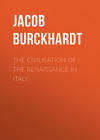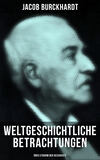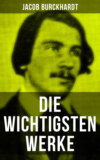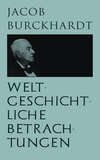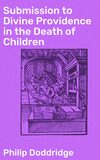Читать книгу: «The Civilisation of the Renaissance in Italy», страница 24
CHAPTER III.
LANGUAGE AS THE BASIS OF SOCIAL INTERCOURSE
THE higher forms of social intercourse, which here meet us as a work of art—as a conscious product and one of the highest products of national life—have no more important foundation and condition than language.
In the most flourishing period of the Middle Ages, the nobility of Western Europe had sought to establish a ‘courtly’ speech for social intercourse as well as for poetry. In Italy, too, where the dialects differed so greatly from one another, we find in the thirteenth century a so-called ‘Curiale,’ which was common to the courts and to the poets. It is of decisive importance for Italy that the attempt was there seriously and deliberately made to turn this into the language of literature and society. The introduction to the ‘Cento Novelle Antiche,’ which were put into their present shape before 1300, avow this object openly. Language is here considered apart from its uses in poetry; its highest function is clear, simple, intelligent utterance in short speeches, epigrams, and answers. This faculty was admired in Italy, as nowhere else but among the Greeks and Arabians: ‘how many in the course of a long life have scarcely produced a single “bel parlare.” ’
But the matter was rendered more difficult by the diversity of the aspects under which it was considered. The writings of Dante transport us into the midst of the struggle. His work on ‘the Italian language’859 is not only of the utmost importance for the subject itself, but is also the first complete treatise on any modern language. His method and results belong to the history of linguistic science, in which they will always hold a high place. We must here content ourselves with the remark that long before the appearance of this book the subject must have been one of daily and pressing importance, that the various dialects of Italy had long been the objects of eager study and dispute, and that the birth of the one classical language was not accomplished without many throes.860
Nothing certainly contributed so much to this end as the great poem of Dante. The Tuscan dialect became the basis of the new national speech.861 If this assertion may seem to some to go too far, as foreigners we may be excused, in a matter on which much difference of opinion prevails, for following the general belief.
Literature and poetry probably lost more than they gained by the contentious purism which was long prevalent in Italy, and which marred the freshness and vigour of many an able writer. Others, again, who felt themselves masters of this magnificent language, were tempted to rely upon its harmony and flow, apart from the thought which it expressed. A very insignificant melody, played upon such an instrument, can produce a very great effect. But however this may be, it is certain that socially the language had great value. It was, as it were, the crown of a noble and dignified behaviour, and compelled the gentleman, both in his ordinary bearing and in exceptional moments to observe external propriety. No doubt this classical garment, like the language of Attic society, served to drape much that was foul and malicious; but it was also the adequate expression of all that is noblest and most refined. But politically and nationally it was of supreme importance, serving as an ideal home for the educated classes in all the states of the divided peninsula.862 Nor was it the special property of the nobles or of any one class, but the poorest and humblest might learn it if they would. Even now—and perhaps more than ever—in those parts of Italy where, as a rule, the most unintelligible dialect prevails, the stranger is often astonished at hearing pure and well-spoken Italian from the mouths of peasants or artisans, and looks in vain for anything analogous in France or in Germany, where even the educated classes retain traces of a provincial speech. There are certainly a larger number of people able to read in Italy than we should be led to expect from the condition of many parts of the country—as for instance, the States of the Church—in other respects; but what is of more importance is the general and undisputed respect for pure language and pronunciation as something precious and sacred. One part of the country after another came to adopt the classical dialect officially. Venice, Milan, and Naples did so at the noontime of Italian literature, and partly through its influences. It was not till the present century that Piedmont became of its own free will a genuine Italian province by sharing in this chief treasure of the people—pure speech.863 The dialects were from the beginning of the sixteenth century purposely left to deal with a certain class of subjects, serious as well as comic,864 and the style which was thus developed proved equal to all its tasks. Among other nations a conscious separation of this kind did not occur till a much later period.
The opinion of educated people as to the social value of language, is fully set forth in the ‘Cortigiano.’865 There were then persons, at the beginning of the sixteenth century, who purposely kept to the antiquated expressions of Dante and the other Tuscan writers of his time, simply because they were old. Our author forbids the use of them altogether in speech, and is unwilling to permit them even in writing, which he considers a form of speech. Upon this follows the admission that the best style of speech is that which most resembles good writing. We can clearly recognise the author’s feeling that people who have anything of importance to say must shape their own speech, and that language is something flexible and changing because it is something living. It is allowable to make use of any expression, however ornate, as long as it is used by the people; nor are non-Tuscan words, or even French and Spanish words forbidden, if custom has once applied them to definite purposes.866 Thus care and intelligence will produce a language, which, if not the pure old Tuscan, is still Italian, rich in flowers and fruit like a well-kept garden. It belongs to the completeness of the ‘Cortigiano’ that his wit, his polished manners, and his poetry, must be clothed in this perfect dress.
When style and language had once become the property of a living society, all the efforts of purists and archaists failed to secure their end. Tuscany itself was rich in writers and talkers of the first order, who ignored and ridiculed these endeavours. Ridicule in abundance awaited the foreign scholar who explained to the Tuscans how little they understood their own language.867 The life and influence of a writer like Macchiavelli was enough to sweep away all these cobwebs. His vigorous thoughts, his clear and simple mode of expression wore a form which had any merit but that of the ‘Trecentisti.’ And on the other hand there were too many North Italians, Romans, and Neapolitans, who were thankful if the demand for purity of style in literature and conversation was not pressed too far. They repudiated, indeed, the forms and idioms of their dialect; and Bandello, with what a foreigner might suspect to be false modesty, is never tired of declaring: ‘I have no style; I do not write like a Florentine, but like a barbarian; I am not ambitious of giving new graces to my language; I am a Lombard, and from the Ligurian border into the bargain.’868 But the claims of the purists were most successfully met by the express renunciation of the higher qualities of style, and the adoption of a vigorous, popular language in their stead. Few could hope to rival Pietro Bembo who, though born in Venice, nevertheless wrote the purest Tuscan, which to him was a foreign language, or the Neapolitan Sannazaro, who did the same. But the essential point was that language, whether spoken or written, was held to be an object of respect. As long as this feeling was prevalent, the fanaticism of the purists—their linguistic congresses and the rest of it869—did little harm. Their bad influence was not felt till much later, when the original power of Italian literature relaxed, and yielded to other and far worse influences. At last it became possible for the Accademia della Crusca to treat Italian like a dead language. But this association proved so helpless that it could not even hinder the invasion of Gallicism in the eighteenth century.
This language—loved, tended, and trained to every use—now served as the basis of social intercourse. In northern countries, the nobles and the princes passed their leisure either in solitude, or in hunting, fighting, drinking, and the like; the burghers in games and bodily exercises, with a mixture of literary or festive amusement. In Italy there existed a neutral ground, where people of every origin, if they had the needful talent and culture, spent their time in conversation and the polished interchange of jest and earnest. As eating and drinking formed a small part of such entertainments,870 it was not difficult to keep at a distance those who sought society for these objects. If we are to take the writers of dialogues literally, the loftiest problems of human existence were not excluded from the conversation of thinking men, and the production of noble thoughts was not, as was commonly the case in the North, the work of solitude, but of society. But we must here limit ourselves to the less serious side of social intercourse—to the side which existed only for the sake of amusement.
CHAPTER IV.
THE HIGHER FORMS OF SOCIETY
THIS society, at all events at the beginning of the sixteenth century, was a matter of art; and had, and rested on, tacit or avowed rules of good sense and propriety, which are the exact reverse of all mere etiquette. In less polished circles, where society took the form of a permanent corporation, we meet with a system of formal rules and a prescribed mode of entrance, as was the case with those wild sets of Florentine artists of whom Vasari tells us that they were capable of giving representations of the best comedies of the day.871 In the easier intercourse of society it was not unusual to select some distinguished lady as president, whose word was law for the evening. Everybody knows the introduction to Boccaccio’s ‘Decameron,’ and looks on the presidency of Pampinea as a graceful fiction. That it was so in this particular case is a matter of course; but the fiction was nevertheless based on a practice which often occurred in reality. Firenzuola, who nearly two centuries later (1523) prefaces his collection of tales in a similar manner, with express reference to Boccaccio, comes assuredly nearer to the truth when he puts into the mouth of the queen of the society a formal speech on the mode of spending the hours during the stay which the company proposed to make in the country. The day was to begin with a stroll among the hills passed in philosophical talk; then followed breakfast,872 with music and singing, after which came the recitation, in some cool, shady spot, of a new poem, the subject of which had been given the night before; in the evening the whole party walked to a spring of water where they all sat down and each one told a tale; last of all came supper and lively conversation ‘of such a kind that the women might listen to it without shame and the men might not seem to be speaking under the influence of wine.’ Bandello, in the introductions and dedications to single novels, does not give us, it is true, such inaugural discourses as this, since the circles before which the stories are told are represented as already formed; but he gives us to understand in other ways how rich, how manifold, and how charming the conditions of society must have been. Some readers may be of opinion that no good was to be got from a world which was willing to be amused by such immoral literature. It would be juster to wonder at the secure foundations of a society which, notwithstanding these tales, still observed the rules of order and decency, and which knew how to vary such pastimes with serious and solid discussion. The need of noble forms of social intercourse was felt to be stronger than all others. To convince ourselves of it, we are not obliged to take as our standard the idealised society which Castiglione depicts as discussing the loftiest sentiments and aims of human life at the court of Guidobaldo of Urbino, and Pietro Bembo at the castle of Asolo. The society described by Bandello, with all the frivolities which may be laid to its charge, enables us to form the best notion of the easy and polished dignity, of the urbane kindliness, of the intellectual freedom, of the wit and the graceful dilettantism which distinguished these circles. A significant proof of the value of such circles lies in the fact that the women who were the centres of them could become famous and illustrious without in any way compromising their reputation. Among the patronesses of Bandello, for example, Isabella Gonzaga (born an Este, p. 44) was talked of unfavourably not through any fault of her own, but on account of the too free-lived young ladies who filled her court.873 Giulia Gonzaga Colonna, Ippolita Sforza married to a Bentivoglio, Bianca Rangona, Cecilia Gallerana, Camilla Scarampa, and others were either altogether irreproachable, or their social fame threw into the shade whatever they may have done amiss. The most famous woman of Italia, Vittoria Colonna874 (b. 1490, d. 1547), the friend of Castiglione and Michelangelo, enjoyed the reputation of a saint. It is hard to give such a picture of the unconstrained intercourse of these circles in the city, at the baths, or in the country, as will furnish literal proof of the superiority of Italy in this respect over the rest of Europe. But let us read Bandello,875 and then ask ourselves if anything of the same kind would have been then possible, say, in France, before this kind of society was there introduced by people like himself. No doubt the supreme achievements of the human mind were then produced independently of the helps of the drawing-room. Yet it would be unjust to rate the influence of the latter on art and poetry too low, if only for the reason that society helped to shape that which existed in no other country—a widespread interest in artistic production and an intelligent and critical public opinion. And apart from this, society of the kind we have described was in itself a natural flower of that life and culture which then was purely Italian, and which since then has extended to the rest of Europe.
In Florence society was powerfully affected by literature and politics. Lorenzo the Magnificent was supreme over his circle, not, as we might be led to believe, through the princely position which he occupied, but rather through the wonderful tact he displayed in giving perfect freedom of action to the many and varied natures which surrounded him.876 We see how gently he dealt with his great tutor Politian, and how the sovereignty of the poet and scholar was reconciled, though not without difficulty, with the inevitable reserve prescribed by the approaching change in the position of the house of Medici and by consideration for the sensitiveness of the wife. In return for the treatment he received, Politian became the herald and the living symbol of Medicean glory. Lorenzo, after the fashion of a true Medici, delighted in giving an outward and artistic expression to his social amusements. In his brilliant improvisation—the Hawking Party—he gives us a humorous description of his comrades, and in the Symposium a burlesque of them, but in both cases in such a manner that we clearly feel his capacity for more serious companionship.877 Of this intercourse his correspondence and the records of his literary and philosophical conversation give ample proof. Some of the social unions which were afterwards formed in Florence were in part political clubs, though not without a certain poetical and philosophical character also. Of this kind was the so-called Platonic Academy which met after Lorenzo’s death in the gardens of the Ruccellai.878
At the courts of the princes, society naturally depended on the character of the ruler. After the beginning of the sixteenth century they became few in number, and these few soon lost their importance. Rome, however, possessed in the unique court of Leo X. a society to which the history of the world offers no parallel.
CHAPTER V.
THE PERFECT MAN OF SOCIETY
IT was for this society—or rather for his own sake—that the ‘Cortigiano,’ as described to us by Castiglione, educated himself. He was the ideal man of society, and was regarded by the civilisation of that age as its choicest flower; and the court existed for him far rather than he for the court. Indeed, such a man would have been out of place at any court, since he himself possessed all the gifts and the bearing of an accomplished ruler, and because his calm supremacy in all things, both outward and spiritual, implied a too independent nature. The inner impulse which inspired him was directed, though our author does not acknowledge the fact, not to the service of the prince, but to his own perfection. One instance will make this clear.879 In time of war the courtier refuses even useful and perilous tasks, if they are not beautiful and dignified in themselves, such as for instance the capture of a herd of cattle; what urges him to take part in war is not duty, but ‘l’onore.’ The moral relation to the prince, as prescribed in the fourth book, is singularly free and independent. The theory of well-bred love-making, set forth in the third book, is full of delicate psychological observation, which perhaps would be more in place in a treatise on human nature generally; and the magnificent praise of ideal love, which occurs at the end of the fourth book, and which rises to a lyrical elevation of feeling, has no connection whatever with the special object of the work. Yet here, as in the ‘Asolani’ of Bembo, the culture of the time shows itself in the delicacy with which this sentiment is represented and analysed. It is true that these writers are not in all cases to be taken literally; but that the discourses they give us were actually frequent in good society, cannot be doubted, and that it was no affectation, but genuine passion, which appeared in this dress, we shall see further on.
Among outward accomplishments, the so-called knightly exercises were expected in thorough perfection from the courtier, and besides these much that could only exist at courts highly organised and based on personal emulation, such as were not to be found out of Italy. Other points obviously rest on an abstract notion of individual perfection. The courtier must be at home in all noble sports, among them running, leaping, swimming, and wrestling; he must, above all things, be a good dancer and, as a matter of course, an accomplished rider. He must be master of several languages; at all events of Latin and Italian; he must be familiar with literature and have some knowledge of the fine arts. In music a certain practical skill was expected of him, which he was bound, nevertheless, to keep as secret as possible. All this is not to be taken too seriously, except what relates to the use of arms. The mutual interaction of these gifts and accomplishments results in the perfect man, in whom no one quality usurps the place of the rest.
So much is certain, that in the sixteenth century the Italians had all Europe for their pupils both theoretically and practically in every noble bodily exercise and in the habits and manners of good society. Their instructions and their illustrated books on riding, fencing, and dancing served as the model to other countries. Gymnastics as an art, apart both from military training and from mere amusement, was probably first taught by Vittorino da Feltre (p. 213) and after his time became essential to a complete education.880 The important fact is that they were taught systematically, though what exercises were most in favour, and whether they resembled those now in use, we are unable to say. But we may infer, not only from the general character of the people, but from positive evidence which has been left for us, that not only strength and skill, but grace of movement was one of the main objects of physical training. It is enough to remind the reader of the great Frederick of Urbino (p. 44) directing the evening games of the young people committed to his care.
The games and contests of the popular classes did not differ essentially from those which prevailed elsewhere in Europe. In the maritime cities boat-racing was among the number, and the Venetian regattas were famous at an early period.881 The classical game of Italy was and is the ball; and this was probably played at the time of the Renaissance with more zeal and brilliancy than elsewhere. But on this point no distinct evidence is forthcoming.
A few words on music will not be out of place in this part of our work.882 Musical composition down to the year 1500 was chiefly in the hands of the Flemish school, whose originality and artistic dexterity were greatly admired. Side by side with this, there nevertheless existed an Italian school, which probably stood nearer to our present taste. Half a century later came Palestrina, whose genius still works powerfully among us. We learn among other facts that he was a great innovator; but whether he or others took the decisive part in shaping the musical language of the modern world lies beyond the judgment of the unprofessional critic. Leaving on one side the history of musical composition, we shall confine ourselves to the position which music held in the social life of the day.
A fact most characteristic of the Renaissance and of Italy is the specialisation of the orchestra, the search for new instruments and modes of sound, and, in close connection with this tendency, the formation of a class of ‘virtuosi,’ who devoted their whole attention to particular instruments or particular branches of music.
Of the more complex instruments, which were perfected and widely diffused at a very early period, we find not only the organ, but a corresponding string-instrument, the ‘gravicembalo’ or ‘clavicembalo.’ Fragments of these, dating from the beginning of the fourteenth century, have come down to our own days, adorned with paintings from the hands of the greatest masters. Among other instruments the first place was held by the violin, which even then conferred great celebrity on the successful player. At the court of Leo X., who, when cardinal, had filled his house with singers and musicians, and who enjoyed the reputation of a critic and performer, the Jew Giovan Maria and Jacopo Sansecondo were among the most famous. The former received from Leo the title of count and a small town;883 the latter has been taken to be the Apollo in the Parnassus of Raphael. In the course of the sixteenth century, celebrities in every branch of music appeared in abundance, and Lomazzo (about the year 1580) names the then most distinguished masters of the art of singing, of the organ, the lute, the lyre, the ‘viola da gamba,’ the harp, the cithern, the horn, and the trumpet, and wishes that their portraits might be painted on the instruments themselves.884 Such many-sided comparative criticism would have been impossible anywhere but in Italy, although the same instruments were to be found in other countries.
The number and variety of these instruments is shown by the fact that collections of them were now made from curiosity. In Venice, which was one of the most musical cities of Italy,885 there were several such collections, and when a sufficient number of performers happened to be on the spot, a concert was at once improvised. In one of these museums there were a large number of instruments, made after ancient pictures and descriptions, but we are not told if anybody could play them, or how they sounded. It must not be forgotten that such instruments were often beautifully decorated, and could be arranged in a manner pleasing to the eye. We thus meet with them in collections of other rarities and works of art.
The players, apart from the professional performers, were either single amateurs, or whole orchestras of them, organised into a corporate Academy.886 Many artists in other branches were at home in music, and often masters of the art. People of position were averse to wind-instruments, for the same reason887 which made them distasteful to Alcibiades and Pallas Athene. In good society singing, either alone or accompanied with the violin, was usual; but quartettes of string-instruments were also common,888 and the ‘clavicembalo’ was liked on account of its varied effects. In singing the solo only was permitted, ‘for a single voice is heard, enjoyed, and judged far better.’ In other words, as singing, notwithstanding all conventional modesty, is an exhibition of the individual man of society, it is better that each should be seen and heard separately. The tender feelings produced in the fair listeners are taken for granted, and elderly people are therefore recommended to abstain from such forms of art, even though they excel in them. It was held important that the effect of the song should be enhanced by the impression made on the sight. We hear nothing however of the treatment in these circles of musical composition as an independent branch of art. On the other hand it happened sometimes that the subject of the song was some terrible event which had befallen the singer himself.889
This dilettantism, which pervaded the middle as well as the upper classes, was in Italy both more widely spread and more genuinely artistic than in any other country of Europe. Wherever we meet with a description of social intercourse, there music and singing are always and expressly mentioned. Hundreds of portraits show us men and women, often several together, playing or holding some musical instrument, and the angelic concerts represented in the ecclesiastical pictures prove how familiar the painters were with the living effects of music. We read of the lute-player Antonio Rota, at Padua (d. 1549), who became a rich man by his lessons, and published a handbook to the practice of the lute.890
At a time when there was no opera to concentrate and monopolise musical talent, this general cultivation of the art must have been something wonderfully varied, intelligent, and original. It is another question how much we should find to satisfy us in these forms of music, could they now be reproduced for us.
A remarkable and comprehensive passage on music is to be found, where we should not expect it, in the Maccaroneide, Phant. xx. It is a comic description of a quartette, from which we see that Spanish and French songs were often sung, that music already had its enemies (1520), and that the chapel of Leo X. and the still earlier composer, Josquin des Près, whose principal works are mentioned, were the chief subjects of enthusiasm in the musical world of that time. The same writer (Folengo) displays in his Orlandino (iii. 23 &c.), published under the name Limerno Pitocco, a musical fanaticism of a thoroughly modern sort.
Barth. Facius, De Vir. Ill. p. 12, praises Leonardus Justinianus as a composer, who produced love-songs in his youth, and religious pieces in his old age. J. A. Campanus (Epist. i. 4, ed. Mencken) extols the musician Zacarus at Teramo and says of him, ‘Inventa pro oraculis habentur.’ Thomas of Forli ‘musicien du pape’ in Burchardi Diarium, ed. Leibnitz, pp. 62 sqq.
Покупайте книги и получайте бонусы в Литрес, Читай-городе и Буквоеде.
Участвовать в бонусной программе
